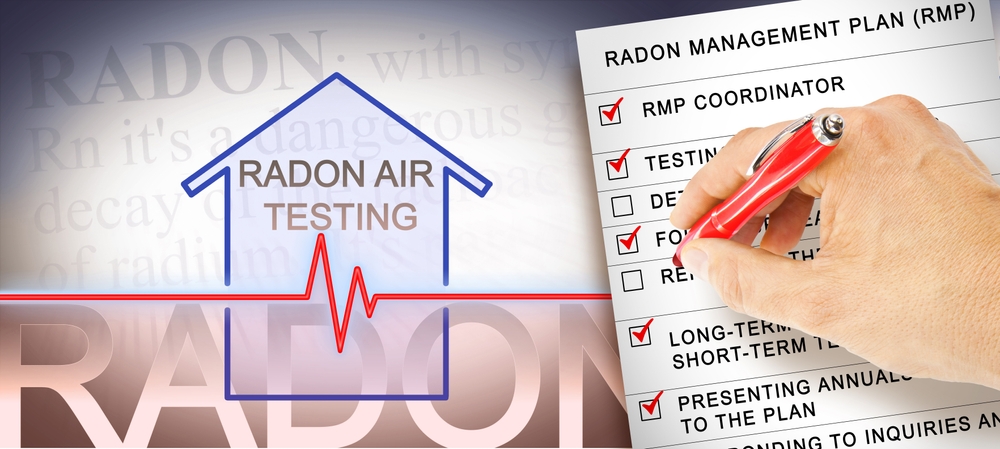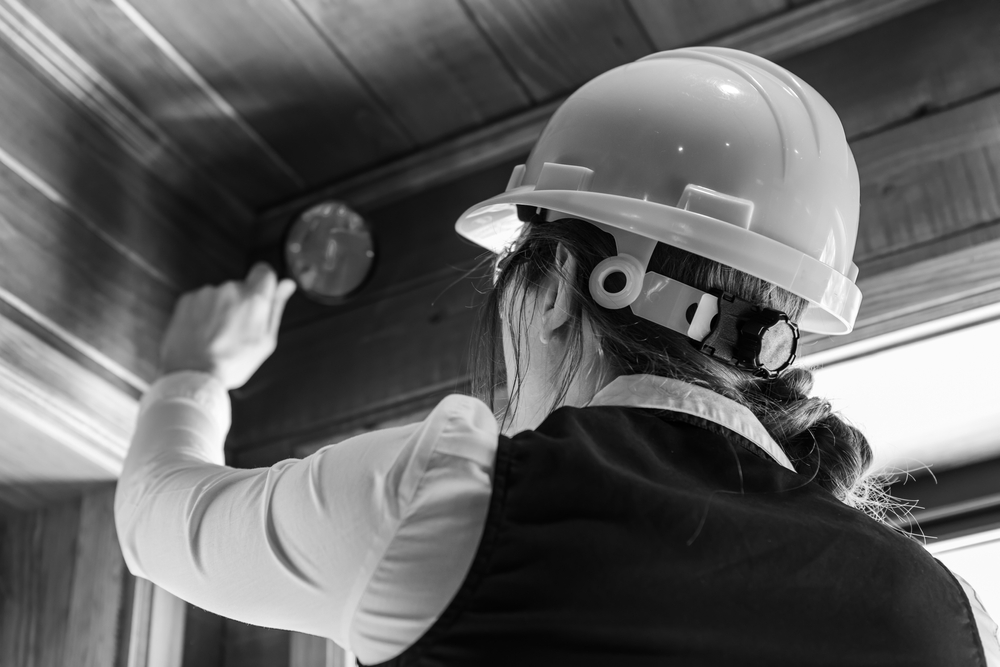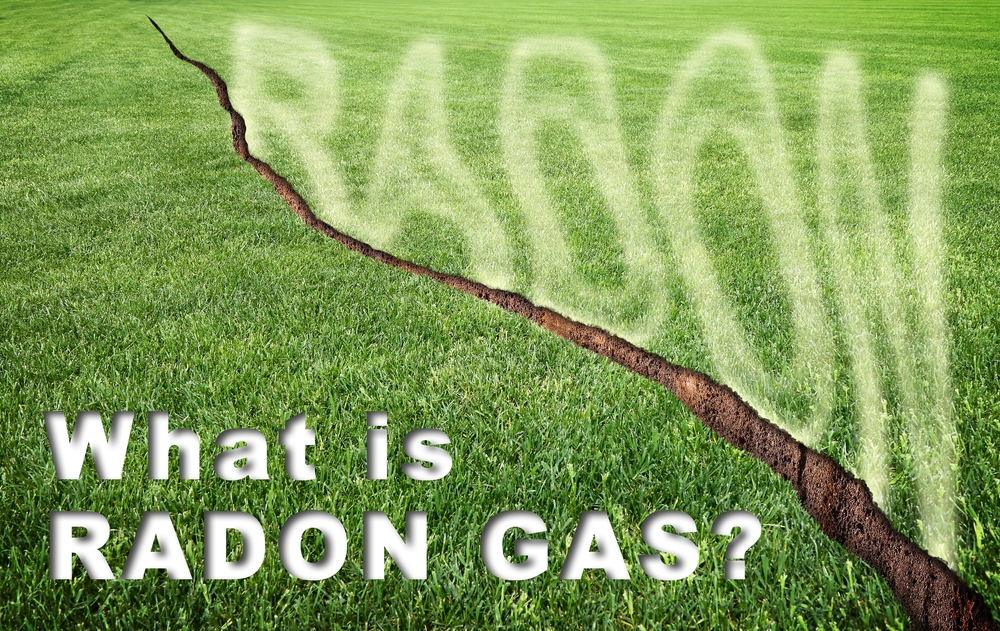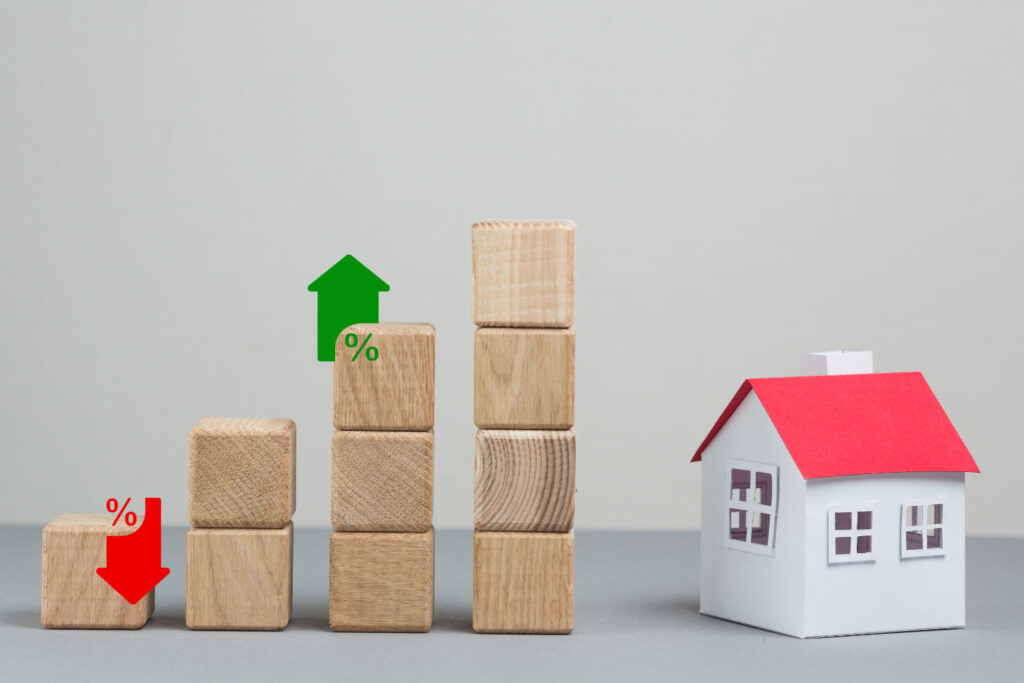As home buyers, sellers, and owners, we often focus attention on visually apparent aspects – the layout, the walls and roof, the kitchen and bathrooms. But what about dangers that lurk unseen and unnoticed in the very foundations of our homes? But your radon risk represents one such invisible yet lethal menace, infiltrating millions of houses while going largely undetected and neglected.
This guide seeks to illuminate the intrinsic nature of radon, how it enters our homes, the significant health perils it poses through long-term exposure, and the vital protective actions we must take.
Understanding Radon
A Radioactive Gas That Seeps From The Ground Into Our Homes
We must first understand what radon is and where it comes from.
Radon is a radioactive gas produced by the natural radioactive decay of uranium and other elements within rock, soil, and water. Colorless, odorless, and tasteless, this gas seeps up from the ground into the air we breathe.
While radon disperses quickly outdoors, it can become trapped inside buildings and accumulate to dangerous levels over time when new radon continues entering from below. The EPA estimates around 1 in 15 homes in the U.S. has elevated radon concentrations, though this varies geographically. Once inside, breathing in the radioactive particles exposes lungs to damaging ionizing radiation and increases cancer risk.
Health Risks
The Leading Cause Of Lung Cancer In Non-Smokers
Although environmental radon exposure is avoidable, this single factor still proves the leading cause of lung cancer among non-smokers. Researchers estimate around 21,000 lung cancer deaths every year in the U.S. result directly from radon. The only larger cause is smoking, which accounts for about 130,000 annual lung cancer fatalities.
Unlike smoking where lung cancer risk drops upon quitting, reducing radon exposure at any time lowers cancer risk. Those exposed from a young age face higher overall risk because lung cancer develops slowly after years or decades. Never smokers exposed to very high radon for decades have a 1 in 4 chance of contracting lung cancer. Capturing attention as a major public health issue, radon merits our awareness and preventative action.
How Radon Enters Homes

While trace radon exists almost everywhere, concentrations become problematically high when surrounding geology and home construction enables the gas to penetrate indoor spaces from the ground. Particular regions and formations conducive to higher indoor radon include metamorphic rock with uranium, granite, shale, and limestone compositions.
Common entry points include cracks in foundation walls and floors, earth floors in crawl spaces, spaces around pipes, cavities inside walls, and tiny pores within concrete materials. Soil composition partly determines how much radon seeps up from bedrock into the air, while pressure gradients suck radon inside through entry points when lower air pressure indoors creates suction. Sealing techniques, ventilation, drainage, and sub-slab depressurization help prevent radon entry.
EPA Recommendations
4 pCi/L Action Threshold
Recognizing radon’s severe health implications, the Environmental Protection Agency (EPA) has established recommendations and an action level to guide home owners, home buyers, real estate agents, and public health policy.
They advise all homes get tested for radon, with 4 picocuries per liter of air (4 pCi/L) set as the threshold for when to take action with mitigation. At concentrations from 2 pCi/L to 4 pCi/L, the EPA still recommends fixes within a few years. Above 4 pCi/L, swift mitigation becomes critical to reduce the lung cancer risk. Reliable testing by professionals helps assess your home’s radon situation.
Real Estate Transactions
Testing and Transparency Imperative
For home buyers and sellers involved in property transactions and investments, upfront radon testing before purchase proves wise and essential for legal liability reasons. Preventing future complications or radon-related litigation means openly disclosing test results.
Where elevated radon exists, buyers may expect sellers to install mitigation systems or lower the price accordingly. Many states now enforce mandatory radon disclosure and accompanying documentation.
For real estate agents, transparently advising clients on radon testing demonstrates diligence and cares for client interests before problems arise later. Even moderate 2 pCi/L to 4 pCi/L radon warrants discussing mitigation options.
Types of Radon Tests
Short-Term To Long-Term
Radon test kits come in short and long-term professional or do-it-yourself home varieties. Short term tests capture snapshots of radon ranging from 2 days to 3 months. Measurements become less precise with wider variation below 6 month testing periods. Experts recommend 90+ day definitive assessments in real estate tests under closed conditions in colder months when radon levels run higher as sealed houses trap the gas.
Professional tests deployed by certified inspectors and labs provide more standardized deployment and accurate analysis. Consider complementary tests in different spaces. Combining a 90 day basement test with a simultaneously deployed test in the main living area checks for and verifies whole-house risk.

Preparing For A Radon Test
Closed-House Conditions
Getting your home ready for radon testing requires occupants to maintain closed-house conditions 12 hours beforehand through completion – keeping all windows and external doors shut, only opening when entering or exiting the building. Cease operating fans, dryers, range hoods or other mechanical ventilation that could skew results by altering indoor air pressure.
Furnaces may operate normally if they recirculate interior air rather than draw outside air. Consult with the deployed test kit instructions or testing professional. Don’t conduct initial tests under major home renovations or extreme weather conditions that affect normal air pressure gradients.
Understanding Your Radon Test Report
Once submitted for analysis after exposure, radon test reports present the test location, testing period length, observed radon concentration, used equipment and protocols, analytical lab details, and potentially testing conditions notes from inspectors.
The boldly highlighted post-analysis indoor radon level gets checked against the 4 pCi/L and 2 pCi/L EPA thresholds. Where state radon laws exist, test reports may state whether mandatory disclosure or mitigations get triggered at that radon concentration. For example, Pennsylvania requires explicit disclosure and mitigation above 10 pCi/L radon risk.
Mitigating Elevated Radon Levels
Ventilation, Sealing, And Sub-Slab Depressurization
When radon levels exceed 4 pCi/L, active mitigation proves essential to safeguard lung health. Passive solutions provide minimal benefit alone. Effective mitigation requires specialized knowledge and equipment. Common remediation methods include sub-slab depressurization (SSD), drain tile suction, block wall suction, and heat recovery ventilation.
SSD uses piping and an in-line fan to draw gas from beneath the foundation and vent them above the roofline, depressurizing the ground so surrounding higher pressure discourages radon entry while indoor air gets replaced from outdoor air intake.
Professional mitigators should assess your home’s construction and test results before designing the right system. DIY radon risk mitigation lacks the performance reliability home owners need. Having an existing system re-tested every few years checks it still functions effectively.
Radon Mitigation Costs
$800 to $2500
Complete professional radon risk mitigation system installation averages between $1200 to $1500 for a single family home, ranging from $800 in smaller homes to $2500 in larger or more complex houses.
Operation costs run about $3 to $5 monthly in fan electricity and occasional maintenance. Mitigation costs get factored into mortgage terms and market pricing during real estate transactions where high radon exists.
Compared to potential lung cancer costs, radon reduction proves extremely cost-effective. Mitigating homes bolsters resale value.
Is Your Home in a High Radon Zone?
Regional & Local Risk Analysis
Radon risk maps designate counties with higher proportions of elevated radon according to limited testing data, helping indicate potentially problematic areas. However, soil composition varies over short distances along with foundation and construction characteristics enabling entry.
Two homes side-by-side may differ radically in indoor radon, meaning nextdoor’s test results don’t indicate your safety or risk. Existing state and county maps offer a starting point for considering precautionary testing.
Historical community test data also helps consultants assess location-specific risk. Testing thoroughly determines your home’s actual radon situation. Where neighbors have undertaken mitigation, testing your residence becomes more advisable.
Radon Risk Reduction
Test, Inform, Communicate, Install Mitigation Systems
Through understanding what radon is, its sources, vectors of ingress, and the lung cancer hazard it poses, we can now take action to analyze and reduce radon risks in our homes and communities through communication, testing, mitigation, and public policy.
Strategies include increasing radon awareness and testing rates by informing home buyers, owners, real estate agents, home inspectors, contractors, and public health officials about radon risks, prevention, and mitigation solutions. Testing homes enables accurate risk assessment before designing appropriate mitigation systems where needed.
Installing sub-slab depressurization, increased under-floor ventilation, and sealing cracked foundations during renovations or new construction rank among the most effective protective measures, alongside avoiding smoking and other air pollutants that compound lung cancer risk.
Revisiting closed regulatory gaps around radon testing and disclosure protocols protects society. Through understanding the nature this hidden threat, we gain power protect our health.
Frequently Asked Questions and Answers About Radon
Is radon testing really necessary?
Yes, radon testing is critical to assess the gas levels in your home, especially in areas known for high radon levels. It’s a proactive measure to safeguard the health of occupants.
What causes radon in a house?
Radon gas originates from the natural radioactive decay of uranium and other elements in soil and rock. It enters homes through cracks in foundations, gaps around pipes, and pores in concrete. Factors like soil composition, underlying rock, and how sealed a home is contribute to radon accumulation indoors.
How do I know if there is radon in my area?
Contact your local health department to inquire about available radon data for different areas. Additionally, home inspection professionals can offer insights on regional radon trends and testing results when buying or selling a home.
Where is radon most commonly found?
While trace radon exists almost everywhere, certain regions and geologic formations show consistently higher indoor radon levels. These include areas with granitic and metamorphic bedrock, especially those bearing uranium; shale deposits; and certain limestone and sandstone formations.
Are home radon tests accurate?
Home radon test kits provide initial screening and awareness, but professional testing over 90+ days offers the most accurate definitive testing needed for real estate transactions or mitigation design.
What are the symptoms of too much radon?
Radon itself is colorless and odorless, without direct symptoms. The health risk comes from long-term lung exposure to radioactive particles, eventually increasing lung cancer risk without acute signs beforehand.
Should I be worried about radon in my home?
Being informed and proactive regarding radon testing and mitigation for your home is recommended to reduce health risks.
How do I prepare my house for a radon test?
To prepare, maintain normal occupancy and closed-house conditions 12+ hours prior to testing. Keep windows and external doors shut except for normal entry/exit. Avoid changes to home ventilation from fans, dryers, range hoods or furnaces that draw outdoor air. Follow all test kit guidance.
Is radon testing really necessary?
Yes, radon testing is highly recommended as an unseen radioactive gas linked to lung cancer, with geographically high yet avoidable household levels. Testing is the only way to analyze your home’s actual radon situation.
Effective Radon Risk Management
Understanding the significance of indoor environmental health threats like radon is at the heart of Realoq’s services. Our primary goal is to educate and safeguard our real estate clients – whether they are buyers, sellers, or homeowners – against the dangers posed by this harmful radioactive gas. Realoq prides itself on forging strong connections with leading certified radon testing laboratories and expert mitigation professionals. We are committed to staying abreast of the most recent developments in testing methods, mitigation technologies, and regional radon regulations.
When preparing to list a property, Realoq agents emphasize the importance of professional radon testing. This step is a crucial part of our prelisting advice. Should tests reveal elevated radon levels, our team is prepared to connect you with specialized contractors who can implement mitigation measures before the property is listed. This foresight helps avert potential issues during the selling process. For those purchasing homes, Realoq agents advise on incorporating comprehensive radon testing clauses in purchase agreements. In cases where mitigation is necessary, our skilled negotiators work to ensure that the sellers address these concerns, either through direct mitigation efforts or through financial adjustments in the home’s price.
To access top-tier professional assessments and mitigation solutions, partnering with a Realoq agent is essential. Our agents can facilitate referrals to the best radon testing and mitigation services in the area, thanks to our extensive vetting process. Our long-standing relationships with these providers often translate into exclusive benefits for our clients, such as special pricing and preferential scheduling options. Furthermore, Realoq is always ready to provide free consultations and offer guidance on responding to radon-related issues during your real estate transactions or throughout your homeownership journey. Reach out to us for dedicated support in navigating and managing radon risks with confidence.


